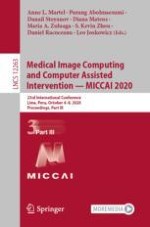2020 | OriginalPaper | Buchkapitel
Simulation of Brain Resection for Cavity Segmentation Using Self-supervised and Semi-supervised Learning
verfasst von : Fernando Pérez-García, Roman Rodionov, Ali Alim-Marvasti, Rachel Sparks, John S. Duncan, Sébastien Ourselin
Erschienen in: Medical Image Computing and Computer Assisted Intervention – MICCAI 2020
Aktivieren Sie unsere intelligente Suche, um passende Fachinhalte oder Patente zu finden.
Wählen Sie Textabschnitte aus um mit Künstlicher Intelligenz passenden Patente zu finden. powered by
Markieren Sie Textabschnitte, um KI-gestützt weitere passende Inhalte zu finden. powered by
